You need to upgrade your Flash Player
Please visit Adobe's Flash Player site to upgrade the most recent version.
Thank you.
If you are having issues with installing Adobe Flash Player, please make sure that all "pop-up killer" applications are turned off and you reinstall
the Adobe player.
Ios island
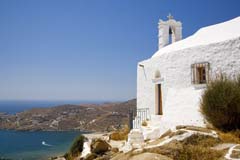
About Ios
general information
- Ios belongs to the Cyclades islands cluster
- Area: 108 square km (largest Cycladic island)
- Distance from Piraeus is 107 nautical miles
- Inhabitants approximately 1,850
- Capital is Ios Town also known as Chora or Nios
- Port of Ios is in Ormos
- Connection with Athens via the ports of Piraeus and Rafina

The coastline of this predominantly mountainous island with its countless chapels, its olive trees, its vineyards and its limpid air, is adorned with small, attractive coves.
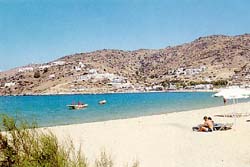 Those features combine with the crystal-clear sea, the superb sandy beaches and the good range of amenities to make Ios a magnet for tourists. Locally called Nios, this is an island whose history goes back to prehistoric times.
Those features combine with the crystal-clear sea, the superb sandy beaches and the good range of amenities to make Ios a magnet for tourists. Locally called Nios, this is an island whose history goes back to prehistoric times. According to Herodotus, the 'poet of poets', the 'god like' Homer was buried at Plakotos, in the north of the island. Pausanias tells us that there was an inscription at Delphi confirming the poet's interment on Ios, which was the homeland of his mother, Clymene.
Above the pretty harbour of Ormos, where fishing boats and yachts bob at anchor, stands the capital of Ios or hora. The town stands on the site of the ancient city of the same name and is a typical Cycladic settlement, with whitewashed houses, narrow alleys and chapels. Among the churches, those of St. Catherine, St. John the Baptist and Sts Cosmas and Damien stand out. The whole beautiful image is rounded off with the bulk of the medieval castle and the row of windmills which top the town.
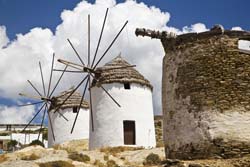 The sites of Ios include a Hellenistic tower and the remains of an ancient aqueduct at Agia Theodoti, traces of an ancient temple at Psathi, a ruinous Venetian castle at the spot known as Paleokastro, and the Hellenistic tower at Plakotos which we have already mentioned.
The sites of Ios include a Hellenistic tower and the remains of an ancient aqueduct at Agia Theodoti, traces of an ancient temple at Psathi, a ruinous Venetian castle at the spot known as Paleokastro, and the Hellenistic tower at Plakotos which we have already mentioned. The Archaeological and Folkloric Museum in Ios Town and the Museum of Modern Art (Drot-Gaiti) at Kolitsani are also worth a visit. Lovers of the sea will be enraptured by the superb beaches of Ios, some of them busy (such as Milopotas, near Ios Town), and others no less attractive but much quieter (Agia Theodoti, Psathi, Kalamas, Plakes, Tzamaria, Kolitsani and Manganari). The authentic Cycladic beauty of Ios, in combination with the island's rapid development for tourism, has had the effect of attractive ever-increasing numbers of visitors.
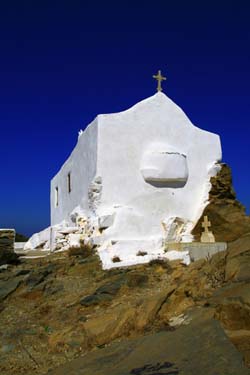
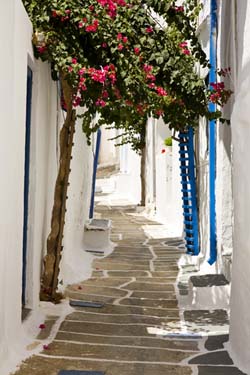
Travel in Cyclades
- Cyclades islands
- All Cyclades islands
- Amorgos island
- Anafi island
- Andros island
- Antiparos island
- Delos island
- Donoussa island
- Folegandros island
- Heraklia island
- Ios island
- Kea (Tzia) island
- Keros island
- Kimolos island
- Koufonissia islands
- Kythnos island
- Milos island
- Mykonos island
- Naxos island
- Paros island
- Santorini island
- Schinoussa island
- Serifos island
- Sifnos island
- Sikinos island
- Syros island
- Tinos island

